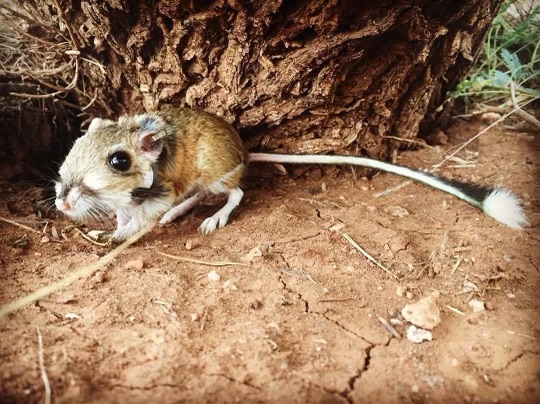You don’t have to travel to the Australian outback to find a kangaroo rat; Texas is home to this charming hopping creature—at least for now. A rare Texas native, listed as threatened by Texas Parks and Wildlife Department (TPWD), the Texas kangaroo rat is suffering population decline due to, it’s widely believed, loss of habitat. Over the last 100 years, the Texas kangaroo rat range has decreased from 13 counties (11 counties in North Texas and two in Southern Oklahoma) to only five counties in Texas. While in graduate school, one of Landmark Wildlife’s biologists did Texas kangaroo rat research near the Red River. He found the proliferation of non-native cool season grasses such as Japanese brome and rescuegrass have destroyed the rat’s prairie habitat, overtaking the bare ground areas they need to forage. Others agree with these types of findings as the U.S. Fish and Wildlife Service (USFWS) in collaboration with TPWD is proposing collaborative, voluntary measures with Texas landowners to help sustain and encourage Texas kangaroo rat populations.
About the Texas kangaroo rat
The Texas kangaroo rat, which has been described as looking like “a massive gerbil,” is a buff-colored creature with long hind feet, four toes, white underbelly, external cheek pouches, and “conspicuous white tuft on the tip of its long tail.” Like a kangaroo, the sprightly rat uses its long hind feet for jumping (springing 7-9’) and escaping predators. Favoring “areas with clay soils and sparse, short grasses and small mesquite bushes,” per TPWD, the Texas kangaroo rat is found “in north central Texas from Cottle and Motley counties in the west to Montague County in the east.” The nocturnal rat lives “in underground dens with the entrance at the base or roots of a small mesquite tree.”
The Texas kangaroo rat breeds year-round, but peaks are in spring and summer, and they don’t waste much time producing more rats as young females may be pregnant within months of leaving the nest. Nevertheless, despite this proclivity for breeding early and often, the rat’s populations are dwindling thanks in no small part to habitat loss. Multiple efforts of the years have been made to have the species listed as endangered, but, so far, to no avail. This new collaboration with USFWS and TPWD aims to offer to turn the tide another way.
Effort to save the Texas kangaroo rat
In a February 18, 2022, press release, USFWS announced the opening of a 30-day public comment period, beginning February 22, 2022, for a proposed programmatic Candidate Conservation Agreement with Assurances (CCAA) for the Texas kangaroo rat. The 10-year agreement with TPWD would involve private landowners with ranching and farming operations to address the conservation needs of the species in North-Central Texas. The innovative CCAA is a formal, voluntary agreement developed with USFWS and private landowners. In return, participating property owners receive assurances that no additional conservation measures will be required if the covered species is ultimately listed as threatened or endangered under the Endangered Species Act (ESA).
Under the Texas kangaroo rat CCAA, private landowners with livestock and farming operations within the historical range of the species would carry out measures to maintain and enhance existing habitat or populations of the species and support the establishment of additional populations. These conservation measures include prescribed grazing, prescribed fire, range planting and reseeding, maintaining dirt road edges, and conserving prairie dog colonies. The proposed CCAA covers the historical range of the species in Texas in all or portions of 11 counties: Archer, Baylor, Childress, Clay, Cottle, Foard, Hardeman, Montague, Motley, Wichita, and Wilbarger.
The 30-day public comment period for the CCAA opens February 22, 2021. For more information on the proposed program, draft documents, and how to submit public comments, visit Comments Sought on Proposed Conservation Agreement for Texas Kangaroo Rat.
Photo of Texas kangaroo rat by Landmark Wildlife Management.









